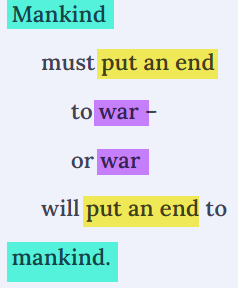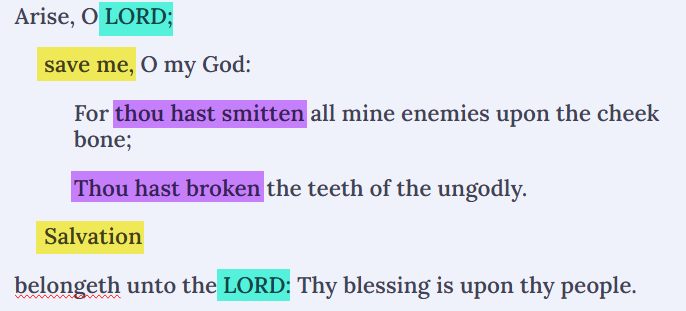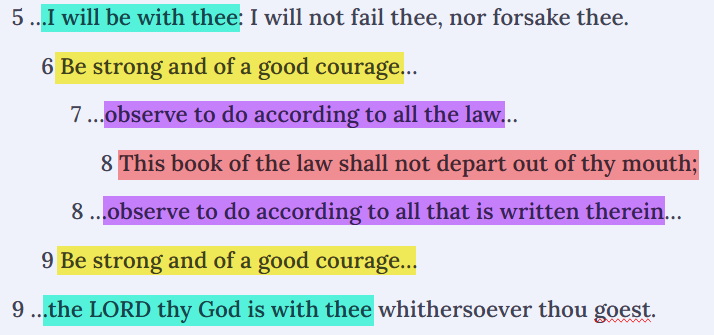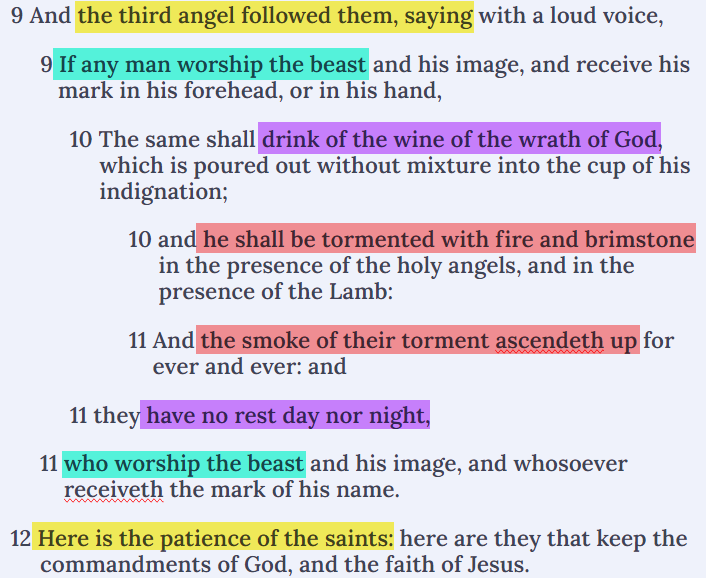The Smoke of Their Torment & the Immortal Soul
The Sapphire Review Vol. 1 | No. 14 • August 23, 2024
“And the smoke of their torment ascendeth up for ever and ever: and they have no rest day nor night, who worship the beast and his image, and whosoever receiveth the mark of his name.”
Today, we will look at the topic of what happens with a person, who is not saved by Jesus, when they are cast into the lake of fire after facing the final judgement of mankind.1
In this article, we will cover the following points:
What Is The Common Belief
What Does The Bible Actually Say
Chiasmus
Understanding Revelation 14:11
WHAT IS THE COMMON BELIEF
What most of Christianity has been taught today is not true. The Bible refers to the fallen and corrupted religious systems of Christianity as “Babylon.”2 Additionally, any false teachings or traditions that come out of Babylon and don’t align with scripture are referred to as the “wine”3 of Babylon’s fornication or “doctrines of devils.”4
Thus, the common belief about the immortality of the soul has its origins, not in the Bible but, in the wine of Babylon. The common belief is that a person who is cast into the lake of fire will remain there forever, eternally burning in agony but never dying. Thus, forming a doctrine that we can understand as the immortality of the soul.
Revelation 14:11, the verse we are studying today, is one of the go-to verses for supporting the belief in the immortal soul. However, one can only reach this conclusion by interpreting this verse through the lens of their pre-existing beliefs/tradition, and not looking at the Bible as a whole while seeking to draw their definition from what all of scripture teaches.5
WHAT DOES THE BIBLE ACTUALLY SAY
The Bible teaches that God sent His only begotten Son (Jesus Christ), so that whoever believes in Him should not perish but have everlasting life (a life that never ends).
For God so loved the world, that he gave his only begotten Son, that whosoever believeth in him should not perish, but have everlasting life.”
“He that believeth on the Son hath everlasting life: and he that believeth not the Son shall not see life; but the wrath of God abideth on him.”
So there are only two options available to people in eternity:
Receive eternal, never-ending, life through Jesus Christ. Live forever.
Encounter the wrath of God - perish, die, and cease to exist. Not live forever.
The word “perish” comes from Strongs G622 and carries the following meaning:
ἀπόλλυμι apóllymi, ap-ol'-loo-mee; from G575 and the base of G3639; to destroy fully (reflexively, to perish, or lose), literally or figuratively:—destroy, die, lose, mar, perish.
If a person were burning in hell forever, this would not be perishing. No matter how unpleasant their experience would be, they would still be living forever and thus having eternal life. According to Jesus, a life that never ends is reserved only for those in heaven with Him. Men have developed clever interpretations rather than taking the plain words of scripture as they read. Rather than adjusting their understandings to align with scripture, they adjust the meanings of scriptures to align with their understandings.
The picture given in the Bible is one where all those who have not trusted in Jesus will perish, die, be destroyed, and cease to exist in the end:
Jesus said to fear the one who can kill/destroy the soul.6
Jesus said that they would be burned up (leaving nothing left).7
David describes a devouring fire, a passing smoke, and wax which is melted in a fire (leaving nothing left)8
David describes the wicked as being consumed away into smoke (leaving nothing left)9
Isaiah describes a fire that devours stubble and consumes the chaff (leaving nothing left).10
Hosea describes a smoke passing out of a chimney (leaving nothing left).11
Nahum describes complete destruction and darkness following them being devoured as stubble by a fire (leaving nothing left).12
Zephaniah describes a fire that devours and brings complete destruction (leaving nothing left).13
Malachi describes stubble being burned up in a fire (leaving nothing left).14
Paul says that eternal life is only for those in Jesus, and death comes to all others (thus having no life that remains).15
Paul describes a fire that will destroy them permanently / forever from the presence of the omnipresent Lord (leaving nothing left).16
Peter says only ashes will remain and forever darkness is reserved for them (a life that ceases to exist).17
In Hebrews we read of a fire that devours (leaving nothing left).18
Jude describes that which destroyed Sodom and Gomorrha as “eternal fire.” (leaving nothing left, the fires are not still burning, the result is eternal).19
John describes the burning up with the final lake of fire as being the second death (thus having no life that remains).20
The Bible is in perfect harmony with itself and there is no conflict. We must rightly divide the scriptures21 and consider them all to reach a proper interpretation. We cannot take single scriptures by themselves and use them to support a certain doctrine while ignoring other scriptures that describe something different than what our desired interpretation may be.
CHIASMUS
Before moving on to breaking down Revelation 14:11, let us first review a writing technique known as a chiasmus. A chiasmus is something that we see throughout scripture, and it is also something that will be helpful to us in understanding Revelation 14:11. So, what is a chiasmus? Here are a couple of definitions:
Chiasmus is defined as a literary device in which words, grammatical constructions, or concepts are repeated in reverse order. It comes from a Greek word meaning “crossing” or “X-shaped.” In practice, chiasmus is when you write a clause and then write a similar clause in reverse.
Chiasmus is a rhetorical device in which two or more clauses are balanced against each other by the reversal of their structures in order to produce an artistic effect.
To better understand this, it may also be helpful to see some examples. In each example below, I have included an image by the original sentence(s). In the images, I’ve highlighted related parts with the same colors and applied indentation so that the chiastic structures can be clearly seen.
CHIASMUS EXAMPLES
John F Kennedy
Mankind must put an end to war – or war will put an end to mankind.
John F Kennedy
Psalm 3:7-8
7 Arise, O LORD; save me, O my God: For thou hast smitten all mine enemies upon the cheek bone; Thou hast broken the teeth of the ungodly.
8 Salvation belongeth unto the LORD: Thy blessing is upon thy people.
Psalm 3:7–8
Joshua 1:5-9
5 There shall not any man be able to stand before thee all the days of thy life: as I was with Moses, so I will be with thee: I will not fail thee, nor forsake thee.
6 Be strong and of a good courage: for unto this people shalt thou divide for an inheritance the land, which I sware unto their fathers to give them.
7 Only be thou strong and very courageous, that thou mayest observe to do according to all the law, which Moses my servant commanded thee: turn not from it to the right hand or to the left, that thou mayest prosper whithersoever thou goest.
8 This book of the law shall not depart out of thy mouth; but thou shalt meditate therein day and night, that thou mayest observe to do according to all that is written therein: for then thou shalt make thy way prosperous, and then thou shalt have good success.
9 Have not I commanded thee? Be strong and of a good courage; be not afraid, neither be thou dismayed: for the LORD thy God is with thee whithersoever thou goest.
Joshua 1:5–9
UNDERSTANDING REVELATION 14:11
To properly understand this verse, we must look at it in its full context with the verses before and after it. In doing this, we will see that John is employing the use of a chiasmus which reaches its focal point in part of this verse. Also, remember that chapter and verse divisions were not part of John’s original letter.
Now, let’s look at the chiastic structure of Revelation 14:9-12:
9 And the third angel followed them, saying with a loud voice, If any man worship the beast and his image, and receive his mark in his forehead, or in his hand,
10 The same shall drink of the wine of the wrath of God, which is poured out without mixture into the cup of his indignation; and he shall be tormented with fire and brimstone in the presence of the holy angels, and in the presence of the Lamb:
11 And the smoke of their torment ascendeth up for ever and ever: and they have no rest day nor night, who worship the beast and his image, and whosoever receiveth the mark of his name.
12 Here is the patience of the saints: here are they that keep the commandments of God, and the faith of Jesus.
Revelation 14:9–12
The focal point is that they are tormented (in the lake of fire22) and that the smoke of their torment goes up forever. John’s choice of words here likely comes from a passage in Isaiah 34:9-15. In this scripture, Isaiah writes about the complete destruction of Edom, where no person would be left. Only a desolate wasteland that is inhabited by wild beasts would remain. In both the writings of John and of Isaiah, the smoke that goes up forever speaks to the totality and permanency of the event. There are no people left in the end. There are no second chances. The event is final – its result is forever.
Those cast into the lake of fire will die the second death.23 They will burn up (resulting in “smoke”) and cease to exist forever. Smoke, in a figurative sense, is all that will remain of them, forever.
Next, notice in the chiastic structure that them having no rest day or night is associated with God’s wrath being poured out and not with their final torment in the lake of fire. This refers to a sequence of events that only those living in the time of the mark of the beast will experience. We read about these events in Revelation 16 where the vials of God’s wrath are poured out upon the earth in the form of the seven last plagues. God is calling His people now to come out of the system of Babylon so that they will not be partakers of these plagues.24
In Revelation 16:2, we see that the vials of God’s wrath will be focused on those which had the mark of the beast and worshipped his image. This is the same group of people that we read about in Revelation 14:11.
Once these vials start pouring out, the earth will be decimated. There will be no relief and no break in time for the inhabitants that have bowed their knees to Satan through the acceptance of his mark and his image. In rapid succession, these destructive events will wash upon them like waves until Christ returns and all that remain are destroyed. They will have no rest day and night from these plagues.
Lastly, it is worth noting that in the chiastic structure the “patience of the saints” is associated with the message being delivered by the third angel. In fact, it is by the hand of these saints that the third angel’s message goes out to the world.
The messages being brought forth will have something to do with the Sabbath (for they keep the commandments of God) and the doctrine of righteousness by faith (for they have the faith of Jesus).
They must be patient due to the length of time until the end (when Christ returns) and due to the severe persecutions that they will face when the mark of the beast is enforced.25
CONCLUSION
So, to conclude our study, we see that the lake of fire is not a place of eternal life where people burn forever in miserable pain. Rather, it is a place where people burn up, like stubble in a fire, and cease to exist.
Those in heaven are the only ones who receive eternal life and are saved from the lake of fire, which is also known as the second death.
The argument used to support eternal suffering in hell by using Revelation 14:11 ignores other clear passages in scripture, and does not take into account the chiastic structure of the writing that John is using around this verse.
The false teaching of the immortal soul that burns in agony in hell forever is one that Satan has used to attempt to mar the character of God. He is a just judge who will not overlook any sin.26 He rightfully assigns eternal life to those who are in Christ and eternal death to those who are without Christ.27 Yet, His anger endures but a moment,28 doesn’t last forever,29 and He takes no pleasure in the death of the wicked.30
God says “the soul that sinneth shall die”.31 Satan whispers today the same lie that he spoke to Eve in the beginning: “ye shall not surely die.”32
God Bless,
Charles
























This is wonderful brother Charles. I have never heard of this principle of study and am thankful for the clarity your message brings to this potentially misunderstood scripture.
Wow, brother Charles! This is put together so well. I appreciate how much time you've put into this and how well you arrange it. You bring out the point of how the false narrative of an eternal suffering in hell is directly against GOD'S true character. Thanks for sharing this, brother.